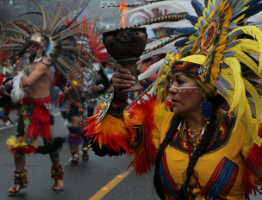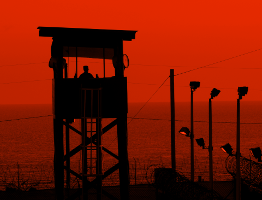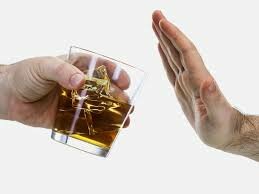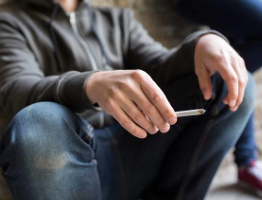Myths About Alcohol Addiction in Native Americans
August 21, 2017 Thomas G. Kimball, PhD
Published in The Doctor Weighs In, August 21, 2017. View the Article Here
 The words alcoholism and addiction are laced thick with stereotype and myth. Those who suffer from this brain disease feel the impact of stigma on a daily basis. Highly marginalized, many suffer too long without reaching out for help because of the fear of being misunderstood and unfairly labeled. Even in recovery when healing is taking place, individuals and families often hide their membership in the community of recovery from others due to not wanting to face harsh judgment.
The words alcoholism and addiction are laced thick with stereotype and myth. Those who suffer from this brain disease feel the impact of stigma on a daily basis. Highly marginalized, many suffer too long without reaching out for help because of the fear of being misunderstood and unfairly labeled. Even in recovery when healing is taking place, individuals and families often hide their membership in the community of recovery from others due to not wanting to face harsh judgment.
For many, the marginalization of suffering from addiction is only part of the stigma and stereotype people face. Often, those who suffer from addiction are members of other marginalized groups based on several socioeconomic, cultural, and psychological factors. The journey of recovery is difficult enough without also being marginalized and misunderstood. We, in the medical and mental health professions as well as society as a whole, can learn much from the journey of those in recovery who not only suffer from addiction but who also experience multiple layers of marginalization and find healing anyway.
Addiction among Native Americans
One common example of an entire culture of people who have experienced strong bias, stereotype, myth, and marginalization on multiple levels are Native Americans (NA). This is particularly true as it relates to NAs and alcoholism. For hundreds of years, the world has believed NA cultures are particularly vulnerable to alcoholism and their prevalence of alcohol use far exceeds other populations by comparison. Research studies comparing alcohol use rates illustrate this long held belief may be highly exaggerated or altogether inaccurate.
In a recent study entitled, “Alcohol Use Among Native Americans Compared to Whites,” researchers Cunningham, Solomon, and Muramoto (2016) found that NA’s had a lower rate of drinking compared to whites. Their findings are revealing, to say the least. To reach their conclusions, they studied a number of recent government surveys assessing prevalence of use on the continuum from abstinence to excessive/severe use. Surveys utilized for the study included the National Survey on Drug Use and Health (NSDUH; 2014), the Behavioral Risk Factor Surveillance System (BRFSS; 2014), and other indicators. Upon examining the National Survey on Drug Use and Health they found the following:
- 60% of Native Americans abstained from using alcohol altogether compared to 43% of whites.
- Almost 15% of Native Americans were light/moderate drinkers compared to almost 33% of whites.
- Native American binge drinking estimates were 17.3% similar to their white counterparts—16.7%.
- Heavy Drinking was also similar with Native Americans at 8.3% and whites at 7.5%.
These results were further confirmed by the Behavior Risk Factor Survey.
As the numbers comparing Native Americans and Whites provide evidence for, addiction impacts individuals, families, and communities at an epidemic rate regardless of age, gender, race, culture, religion, socio-economic status, sexual orientation, etc. The truth is approximately 10% of the population 12 years and older meet the criteria for intensive substance use treatment and most likely suffer from the brain disease of alcoholism/addiction (NIDA).
Native American addiction treatment models
Often cultural differences and insensitivities make it hard for marginalized groups to access and do well in traditional healthcare or treatment models. Despite this, Native American cultures have a long history of helping those who suffer find recovery through combining modern techniques with long held tradition.
In an effort to combat the disease and to help those who suffer find long-term recovery, let’s examine a few ideas/efforts Native Americans have utilized successfully to combat this epidemic:
Wellbriety
Wellbriety is a term and a movement that began in 1994 to assist Native Americans who needed healing and recovery. From the website www.wellbriety.com:
The Wellbriety Movement is an interconnected web spreading across our Native Nations carrying the message of cultural knowledge about recovery for individuals, families, and communities. The web is a live entity that was born out of the work that White Bison created after the Elders told about a healing time that has come.
Wellbriety is more than just being clean and sober from alcohol and other drugs. It is the pursuit of growth and wellness. Wellness is achieved through a balance of the mental, physical, spiritual, and emotional parts of ourselves. This journey can only be made when one is connected to important values and natural laws. The sufferer must return to their culture for healing to take place. In a sense, return to what and who they know including themselves and themselves connected to others embedded in a culture of healing.
Coyhis and Simonelli (2008) in their work entitled, “The Native American Healing Experience,” make this strong case:
“For many Native Americans, [Wellbriety] also means recovering culturally. Return to the culture is a vision embraced by many American Indians as integral with addictions recovery. It signifies a desire to live through the best attributes of traditional Native cultures while standing firmly on the ground of contemporary life. Non-Native recovery approaches often look at addiction as an individual disease, ignoring the social, political, or economic roots of addiction. The indigenous experience adds a dimension of acknowledging sociopolitical causes without removing an individual’s need to do the hard work it takes to heal. This is new, culturally specific thinking that can also add to the field of mainstream recovery knowledge.”
Coyhis and Simmonelli (2008) go on to describe four important laws of change given to them by a Native American Elder in New Mexico in the 1980’s that are the root and beginning of the Wellbriety Movement. In my opinion, these laws of change have broad application to our pursuit to help others from all types of cultures, communities, and nations find recovery. These laws of change include:
- Change is from within
Change from within is not only about being ready to change but also being willing to change. From someone to heal in recovery, they have to be willing to examine their own thoughts and also their connection to others.
- In order for development to occur, it must be proceeded by a vision
Having a vision means to have some idea where you would like to be in the future. It is a hopeful vision. In this idea of vision, those who are part of the healing community (e.g., family, friends, community) share thoughts and ideas about what they see in the future. This vision is about a better life and future for all involved.
- A great learning must take place
A great learning implies that the community surrounding the sufferer must take part in the discovery and learning for wellness to occur. Acting as an “integrated whole”, real healing and learning can take place (Coyhis & Simmonelli, 2008).
- You must create a healing forest
Creating a healing forest is the culmination of the Laws of Change anchoring the pursuit of Wellbriety. In order to understand the healing forest metaphor, you must know the healing forest story. As recounted by Coyhis and Simonelli (2008):
Suppose you have a hundred-acre forest and in that forest, there is a disease or sickness. All the trees are sick. It is a sick forest. Suppose, then, you go to that forest one day and you take one of those sick trees and temporarily uproot it and put it under your arm. You walk down a road and you put it in a nursery where there is good soil. …So now, you have this tree in good soil, and it becomes healthy because it is getting sun and rain. It is getting well. It is turning green. You get this tree to be well and then you take this well tree back to the sick forest. What happens if you take a well tree back to a sick forest? It gets sick again (Simonelli, 1993; White Bison, 2002).
Healing the addiction epidemic
It should not be lost on anyone that in today’s acute treatment environment, we often take individuals who suffer from the disease of addiction out of their communities, stabilize them, and then send them back to their environment. We send them back without providing extended recovery support or help to the original soil—family, friends, and communities. No wonder so many people who come out of treatment immediately fall back into use and unhealthy patterns of behavior.
It is past time for a “great healing” to take place throughout our society. Healing from the disease of addiction starts when we are willing to change ourselves from within—all of us. Our entire nation needs to embark on a great journey of learning and growing. What holds us back is seeing the vision of what we, when united, could do together as healthcare providers, policy makers, third-party payers, communities, and families. We must amend the soil of our community and our nations so it is good again. Until we do this, many more of those we love will continue to suffer and die from the disease of addiction/alcoholism.








